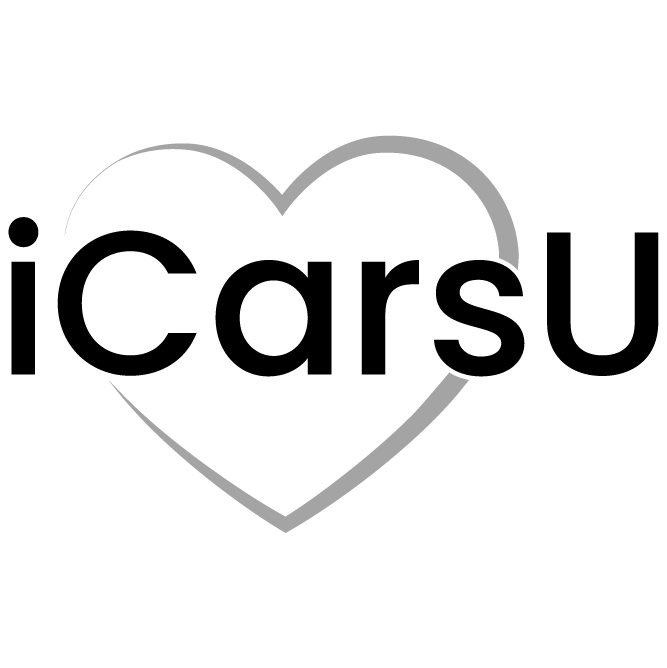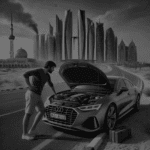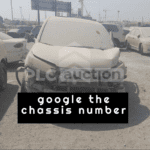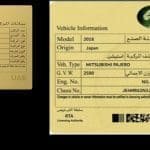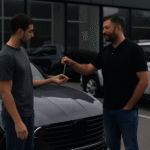

How to Inspect a Used Car: A Comprehensive Guide
How to Inspect a Used Car: A Step-by-Step Guide
When buying a used car, knowing how to inspect a used car is essential to ensure you’re making a smart investment. A thorough inspection helps identify potential issues, which can save you time, money, and stress later on. This guide will walk you through the critical steps involved in inspecting a used car in Abu Dhabi, UAE.
1. Start with the Exterior Inspection
The first thing you should do when inspecting a used car is to check its exterior. A quick walkaround gives you a good idea of the car’s overall condition.
Check for Body Damage
Look for any scratches, dents, or rust. Pay attention to the paint job. Mismatched paint can be a sign that the car has been in an accident. Also, inspect the car’s frame for any unusual bends or damages.
Examine the Tires
The tires should have even tread wear. Uneven wear may indicate suspension problems or misalignment. Check the tire pressure as well. Low pressure could be a sign of an underlying issue, like a slow leak.
Look at the Windows and Lights
Make sure that the windows are free from cracks or chips. Test the lights, including headlights, brake lights, and turn signals. Ensure that they all function properly, as replacing faulty lights can be costly.
2. Inspect the Engine Bay
Next, open the hood and check the engine bay. This area can reveal a lot about the car’s maintenance and care.
Look for Leaks and Corrosion
Check for any visible fluid leaks, especially oil or coolant. Corrosion around the battery terminals or on the engine parts is also a red flag. These issues can be expensive to fix.
Check the Belts and Hoses
Examine the belts and hoses for any signs of wear, cracks, or leaks. These components are crucial for the car’s performance and can be costly to replace if damaged.
Examine the Oil and Fluids
Check the oil level and its color. Fresh oil should be golden or light brown. Dark oil could indicate neglect, and you may want to reconsider buying the car. Similarly, check the coolant and brake fluid levels to ensure they’re within the proper range.
3. Inspect the Interior
The interior of a used car also speaks volumes about its condition. Take a close look at all aspects of the interior before making any decisions.
Check the Upholstery and Interior Features
Examine the seats for wear, tears, or stains. A car with worn upholstery might have been poorly maintained or used extensively. Check if all interior features, including air conditioning, the radio, and the power windows, are working correctly.
Test the Dashboard and Instruments
Turn on the car and ensure the dashboard lights and instruments work properly. Pay attention to warning lights like the check engine light, oil pressure, and battery warning light. These could indicate underlying issues with the car.
Smell the Interior
While it may sound odd, the smell of the interior is a crucial sign of the car’s health. A moldy or musty smell may indicate water damage, which can be difficult and costly to repair. A strong chemical smell could mean that the car was involved in an accident and has been repainted.
4. Check the Suspension and Steering
The suspension and steering are key components of a car’s performance and safety.
Test the Suspension
Press down on each corner of the car. It should bounce back and settle immediately. If it continues to bounce, the shock absorbers or struts may be worn out and in need of replacement.
Check the Steering
While driving the car, pay attention to how the steering feels. If it pulls to one side or feels loose, there could be issues with the alignment or suspension system. Ensure that the steering wheel doesn’t make any odd noises or vibrations while turning.
5. Test Drive the Car
A test drive is one of the most important parts of inspecting a used car. It allows you to check how the car handles and whether there are any issues with its performance.
Listen for Unusual Noises
While driving, listen for any odd noises like squealing brakes, knocking sounds from the engine, or strange vibrations. These can be signs of engine or transmission issues that need attention.
Check the Brakes
Test the brakes by gently pressing down on the pedal. The car should stop smoothly without any jerking or grinding noises. If you notice any issues, the brake pads or rotors may need to be replaced.
Test the Acceleration
Accelerate gradually to see how the car responds. If the car hesitates or struggles to accelerate, there might be an issue with the fuel injectors or the transmission.
6. Check the Vehicle History Report
A crucial part of inspecting a used car is understanding its past. Make sure to check the vehicle history report to learn about any previous accidents, service records, and ownership history.
Obtain a Vehicle Report
You can obtain a report from various online services. This report will show if the car has ever been in an accident or had any major repairs. It will also tell you if the car has a clean title or if it’s been salvaged, which could affect its resale value.
Verify the Odometer Reading
Ensure the odometer reading matches the car’s age and service history. A significantly lower-than-expected mileage could indicate that the car’s odometer has been tampered with.
7. Assess the Price
Once you have completed the inspection, it’s time to evaluate the car’s price. Compare the asking price with the average market value for similar cars. Be wary if the price seems too good to be true. It might indicate that there are hidden issues you haven’t uncovered yet.
Negotiate the Price
If you find any issues during the inspection, use them as leverage to negotiate a lower price. Whether it’s worn-out tires, needed repairs, or any other problems, make sure to factor those into your offer.
الأفكار النهائية
Inspecting a used car is a critical step before making a purchase. If you follow these steps carefully, you can make an informed decision and avoid buying a car that will cost you more than it’s worth. By thoroughly checking the exterior, engine, interior, and taking it for a test drive, you ensure that the car you’re buying is reliable and safe. In Abu Dhabi, where car prices can vary greatly, it’s important to know what to look for when inspecting a used car. Whether you’re looking to sell any car or trying to sell your car, understanding how to inspect a used car can help you make the right choice.
How can I inspect a used car to avoid buying a lemon?
To inspect a used car properly and avoid a bad purchase, make sure you thoroughly check the body for dents, rust, or mismatched paint. Test the engine, transmission, and brakes during a test drive. Don’t forget to check the car’s history report for past accidents. These steps will help you avoid common pitfalls when buying a used car.
What should I check under the car during an inspection?
When inspecting a used car, it’s crucial to look under the car for any signs of damage or leaks. Check the exhaust system for rust or holes, and ensure there are no oil or fluid leaks. Look at the frame and suspension for any signs of wear or bending. If anything seems off, it could be an indication that the car has had a rough past.
Is it necessary to bring a mechanic when inspecting a used car?
While you can do a basic inspection yourself, it’s highly recommended to bring a mechanic when inspecting a used car, especially if you’re not familiar with cars. A professional mechanic can identify issues that might not be immediately apparent to an untrained eye, such as engine problems or issues with the transmission.
How can I inspect the car’s interior to ensure it’s in good condition?
When inspecting a used car’s interior, check the seats for any signs of wear and tear. Test all electronic features like the radio, air conditioning, and windows. Don’t forget to check for any strange odors, which could be a sign of water damage or mold. A well-maintained interior shows the car has been cared for.
What are the common issues to look for in a used car before buying?
Before buying a used car, keep an eye out for common issues like engine misfires, worn-out brake pads, suspension problems, or leaks. Listen for any unusual sounds during the test drive and check the car’s history report to make sure it hasn’t been in a major accident. These issues can help you assess whether the car is worth the price.
بيع أي سيارة نقداً اليوماطلع على منشورات مدونتنا للمزيد من النصائح المتعلقة بشراء أو بيع أو تسجيل سيارة مستعملة في أبوظبي أو دبي أو أي مكان في الإمارات العربية المتحدة.
إضافة تعليق إلغاء الرد
تصنيفات
- أبو ظبي (2)
- الحوادث (3)
- تسجيل السيارات (1)
- مواصفات دول مجلس التعاون الخليجي (3)
- مستورد (3)
- بيع سيارة (1)
- المواصفات (1)
- غير مصنف (11٬263)
أحدث المنشورات
منشورات ذات صلة


Trusted Used Car Buyer in Bain Al Jesrain


